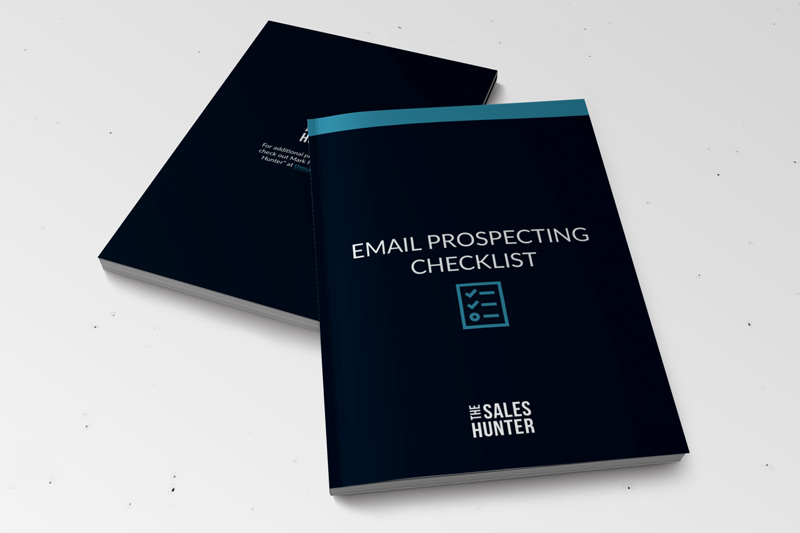Let me share with you 10 ways to overcome a price objection. When the customer says, “Hey, your price is too high,” there’s some sort of issue with the price, especially right now during a pandemic. I’ll walk you through the 10 things. First of all, when the customer says, “Hey, I want a price reduction.” Why are they asking that? Are they asking it just because it’s the thing to do right now?
Video – 10 Ways to Overcome a Price Objection in a Pandemic
1. Clarify the Why
This is the first step. Clarify the why behind what you’re saying. You have to come back and say, “What is it I haven’t said, and what value are you looking for?” Get the customer to explain more. Many times, they’ll simple say, “Well, gee, everybody’s giving a discount, so why can’t I have one?” At least if you know that, you’re going to know how to come back to them.
2. A Higher Priced Option
Present a higher priced option. This may sound strange, but presenting a higher priced option is a good strategy. Walk your customer through the options and then lay out a higher priced option. This is why many times I tell salespeople to lay the higher priced option out first. You let them respond with, “Oh, that’s just way too high.” Then you put the one that you think they’re going to take in front of them. It’s amazing, because when it contrasts with the higher price, they take that offer. Think about it – if you had just given them that price all along, they would have asked for a decrease of some sort.
3. Link to Something Greater
What do I mean by link to something greater? Well, what is the outcome? What is the real reason why they want to buy? You can sit there and say, “Hold it. I believe you had said you needed it for this.” But then you’re linking it to something greater, something bigger out there that they have to. Think about this for a second – if they have to have this, what are you selling them in order to be able to do this? When you understand the full context of why they need to buy something, it is amazing how price just pains away.
4. Focus on the Outcome
This one builds on number three. Focusing on the outcome is about their critical need. You never put a price on the table until the customer shares their need with you, so what critical outcome are they looking for? When you understand the critical outcome, you can begin to understand how big of an issue it is. You’ll start to learn how much of a need they have and how big the urgency is. Focus on challenges to meeting their need. One of the things I encourage salespeople to do when you do put a price on the table is to walk them through what the outcome is or how you see it. Tell them you’re sharing this with them because they shared with you. Then, after that, you put the price on the table. So now they see the outcome and the price – together.
5. Offer Payment Options / Terms
Offer payment term options. Maybe it’s a simple thing, because right now during the pandemic, it’s a little bit difficult. So fine. If you’re in a position that you can create payment terms, go ahead and do it. Now, does this mean you’re giving them a discount? No. By offering payment options, you might actually tell them, “Hey, it’s going to cost a little bit more, but I’m willing to spread the terms out.” You might be deferring partial payment, whatever it might be. Just make sure you understand your own cashflow position before you start racing into that.
6. Urgency/Scarcity
This is a huge one. Right now, depending on where and what you sell, there very well may be a scarcity and/or urgency because of supply chain issues. There also may be a host of other things so come back and say, “Hey. Well, you know what? I know you needed to get this done because you’re scaling up for this part of your business and who knows what’s going to happen from a supply chain issue, customer issue and so forth. This is why we need to get this done.” By saying this, you’re creating sense of urgency in your customer. You can also say, “Oh, if we don’t get this order placed now, because we’re having a hard time manufacturing, we may not be able to. The last thing I want to do is not be able to fulfill your order right away. That’s why we’ve got to get the order in right now.” Don’t play the urgency/scarcity cards unless you’re serious, and unless it’s true. Don’t sit there and blow smoke if there is no fire.
7. Time/Walk Away
This simply means having this decision made by a certain date. There’s no option. You walk away if the decision is not made by the set time. I’ve been amazed at this. Several times, with salespeople, just in the last several weeks, they put an offer on the table and the customer kind of balked and they wanted a discount. The salesperson says, “Well, sorry, this is what it is, and this is the right price for your solution.” They come back and simply walk away. Then, the next day, the customer comes back and says, “Okay, I’m ready to move.” Yes, that takes confidence. But when you can do that, you’ll lose far fewer deals than you ever realize.
8. Peer Recognition
What is peer recognition? It refers to the many times customers buy something just because everybody else in their industry uses the same thing. It’s because they need to be on that same bandwagon; they have a little bit of FOMO (fear of missing out). They think if they don’t buy, they’re not going to see like all these others. Peer recognition works very well. It works just as well from your end, in terms of allowing you to be able to say, “Hey, all of my best accounts have always signed up for this program. My best people have always done that.” That is absolutely key.
9. Trust and Confidence
These are two very important words, that I can’t stress enough. It comes down to who you are and how you are creating a level of trust. Ok, I understand that you’re concerned about price. Sure. I think that I have demonstrated if you provide the trust and the confidence, you’re going to be able to achieve what you expect to achieve.” It’s so true that the higher the degree of trust and confidence created with your customers, the better. And it is amazing how fewer arguments you will have regarding price.
10. ROI From the Purchase
What is the ROI of the purchase? Remember that nobody buys anything. Even B to C, nobody buys anything. People invest, so they want to know the ROI. So, you want to be able to come to them and sit there and say, “By making this purchase now, this is how it’s going to work out for you.” Then, you begin to spell it out in a tighter, shorter window. In other words, the faster you can help them see ROI, the faster they’ll make that decision and less the hindrance regarding the price. Keep in mind that ROI might be either a gain or an avoidace of pain.
Here’s the big picture – if you make a one-time purchase that gives you a lifetime value, the price for the one-time purchase is really irrelevant. Great selling!
As one of my loyal blog readers, I have an opportunity today for you to invest in your skills. Together, we can take today’s challenges and turn them into once in a lifetime opportunities. Consider this quote that I wrote in my new book, A Mind For Sales and say often:
When challenges arise we don’t rise to the occasion, we sink to the level of our training.
Are you ready? Watch the video above, and come be a part of the continued conversation as we all become masters in our fields and passions. My new program, The Sales Hunter University, is where you’ll find it all – unlimited personal growth, hands-on learning, quick tips, abundant resources, and an amazing community.
For more information and to join, click here!
Hey, have you read my new book, A Mind For Sales? Many have told me it’s a must-read for salespeople during this pandemic. Unlike my previous 2 books, this isn’t just about sales and prospecting, it’s all about your mind and your mind being one of your greatest assets to being successful. Go grab a copy on Amazon! I would love for you to post a review to help share the message of A Mind For Sales with others. Reviews are the best way to spread the word!
Copyright 2020, Mark Hunter “The Sales Hunter” Sales Motivation Blog. Mark Hunter is the author of A Mind for Sales and High-Profit Prospecting: Powerful Strategies to Find the Best Leads and Drive Breakthrough Sales Results.












